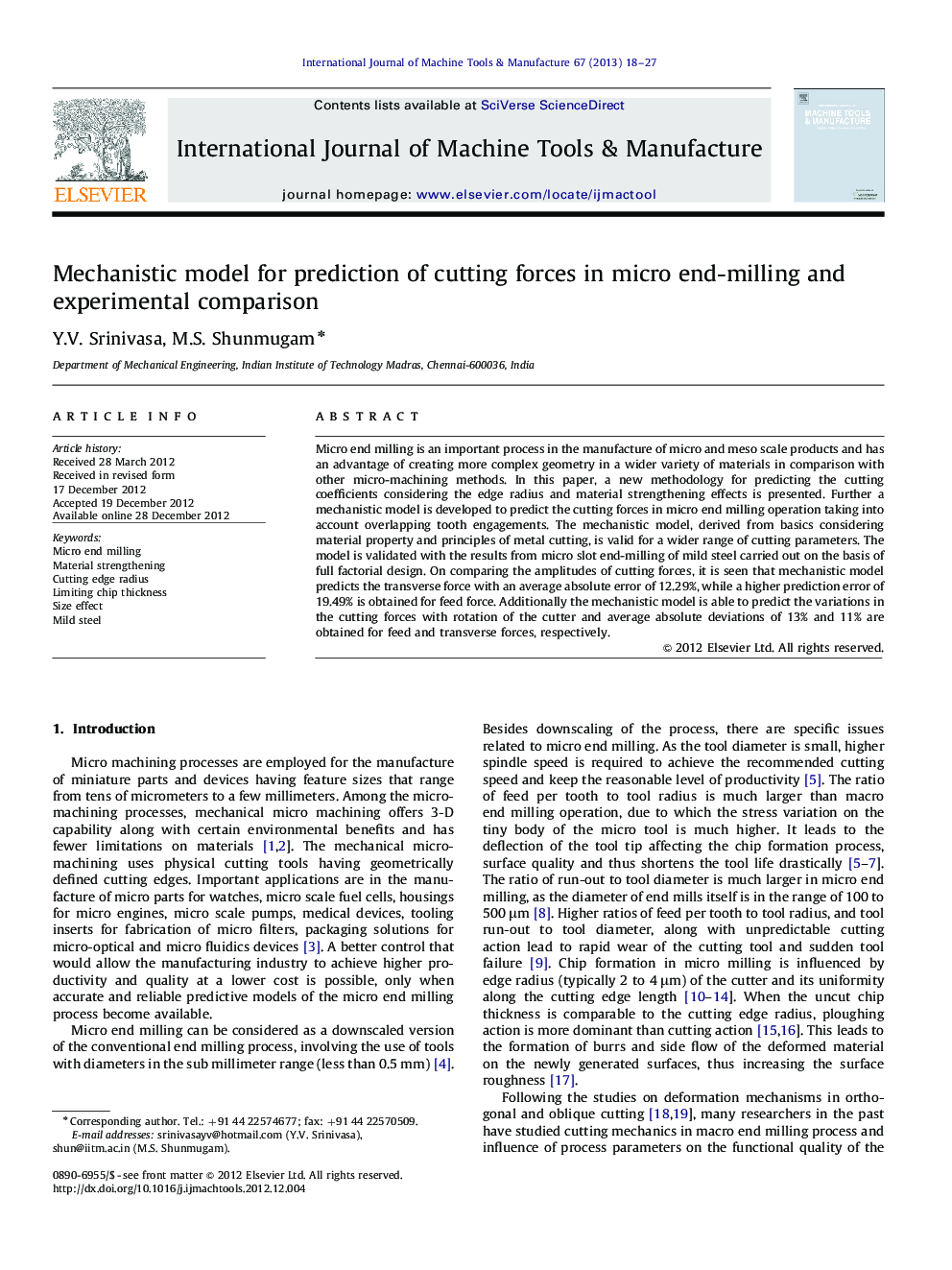| کد مقاله | کد نشریه | سال انتشار | مقاله انگلیسی | نسخه تمام متن |
|---|---|---|---|---|
| 781685 | 1464524 | 2013 | 10 صفحه PDF | دانلود رایگان |

Micro end milling is an important process in the manufacture of micro and meso scale products and has an advantage of creating more complex geometry in a wider variety of materials in comparison with other micro-machining methods. In this paper, a new methodology for predicting the cutting coefficients considering the edge radius and material strengthening effects is presented. Further a mechanistic model is developed to predict the cutting forces in micro end milling operation taking into account overlapping tooth engagements. The mechanistic model, derived from basics considering material property and principles of metal cutting, is valid for a wider range of cutting parameters. The model is validated with the results from micro slot end-milling of mild steel carried out on the basis of full factorial design. On comparing the amplitudes of cutting forces, it is seen that mechanistic model predicts the transverse force with an average absolute error of 12.29%, while a higher prediction error of 19.49% is obtained for feed force. Additionally the mechanistic model is able to predict the variations in the cutting forces with rotation of the cutter and average absolute deviations of 13% and 11% are obtained for feed and transverse forces, respectively.
► An accurate and reliable mechanistic model for cutting forces in micro end milling is presented.
► Basic material property including edge radius and material strengthening effects is considered.
► Predicted forces are compared with unfiltered signals measured from extensive experimentation.
► Amplitudes of feed and transverse forces are predicted within 19.49% and 12.29%, respectively.
► Deviations between feed and transverse force signals are within 13% and 11%, respectively.
Journal: International Journal of Machine Tools and Manufacture - Volume 67, April 2013, Pages 18–27